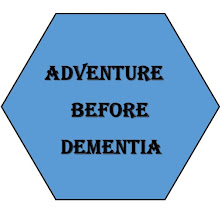Until about 1920, camels were widely used in the outback for travel and transport; many were then released to the wild and today there are about a million feral camels wandering around eating food used by native animals and destroying fences built by sheep and cattle ranchers.
We stopped for lunch at the Mt. Ebenezer Roadhouse, which is owned and run by the Imanpa Community of Aborigines. For a place that seemed to be a million miles from nowhere, there was a wide choice of foods for lunch, as well as an art gallery showcasing items made by people from the bush community.
We also took a brief stop for a closer look at a dried up salt lake, of which there are hundreds throughout the outback. These are wet lakes after a rain, but dry to a white contrast in the red desert sand.
By mid-afternoon, we made it to Curtin Springs, which is a working cattle station owned and operated by Peter Severin and his family. It was our good fortune that Peter Severin himself was available to tell us about life in the outback. The Severin family took over the pastoral lease in 1956 - this was a grazing license, renewable every 12 months. These graziers were encouraged by the government to open up the land, purchase a windmill, a tank, a trough and some sheep or cattle. They could get loans from the bank only if they signed an agreement to add a number of infrastructure improvements - three more permanent water holes, fences around and internal to the property, and a house (all within 10 years). Only problem was that shortly after Severin got things going, along came a drought and there was no rain for nearly 10 years. Things got a bit difficult, to say the least.
He diversified a bit by adding services for travelers and doing some contract work building roads and today things run a little more smoothly. Water still is a constant concern - it is pumped from deep wells on the property. Electricity is generated on site by a generator that runs 24 hours a day. Supplies come weekly by truck from Alice Springs (200 miles away) and the mail comes about 3 times a week. Nothing comes easy, and it seemed that he spends most of this time battling with the government about one thing or another - septic systems, controlling wild camels, etc. Mr. Severin was a great storyteller and it was easy to see why he is considered a legend in this part of the country.
In late afternoon, we arrived at Uluru-Kata Tjuta National Park, home of one of the great natural wonders of the world - a sandstone monolith that stands 348 meters high above the endless (and flat) desert. In the same park is Kata Tjuta, also known as the Olgas, a massive pile of 36 weathered rock domes estimated to be 500 million years old. It is an area of sacred importance to the Aboriginal people, who have lived in the area for 50,000 years.
We went first to see Kata Tjuta, in many ways prettier and more interesting than Uluru. The Aboriginal name means "many heads" and the tallest dome is nearly 700 feet taller than Uluru. It was screaming hot when we arrived, but we went for a short walk along the Gorge Trail to get a closer look at the rock structures.
It is indeed big and many people feel something spiritual about the place; we mostly felt hot and dusty. Our attitude was improved considerably by the champagne, juice and hors d'hoevres that were waiting for us at the sunset viewing area. It was quite an international party near the base of the rock - here were people from all over the world, all drawn to experience the subtle changes in the in rock's color as the sun sank behind us into the desert.













